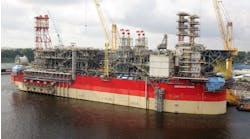RC Technology has developed Data Stem, a line monitoring system that allows the operator to acquire well log information in the form of pressure and temperature during any slickline, braided line, or electric line operations. The system offers reduced intervention costs by using the latest in miniature memory gauge technology and force recognition sensing. As well as pressure and temperature, the Data Stem also incorporates an accelerometer that records and stores all loads applied to the wireline during operations in the wellbore, the company says.
RCT has employed an existing weight bar system commonly used in wireline in 2, 3, and 5-ft lengths for 1 1/2-in., 1 7/8-in., and 2 1/2-in. diameter weight bar that incorporates single or dual embedded gauges. The application of the Data Stem removes the need, in many applications, for a separate gauge run in the wellbore to acquire pressure and temperature logs. Whenever a wireline intervention is required, Data Stem is included in the wireline string.
The application of embedded gauges within the toolstring does not impact the structural strength of the system. Data Stem has been designed to accommodate the impact forces of both hydraulic and mechanical jars with a built-in springs and damping system. The embedded accelerometer is a memory system capable of logging forces applied to the wireline during operations. The combination of memory gauges and accelerometer can be analyzed to give a precise depth measurement, when combined with the wireline depth indicator of seating nipples, restrictions, doglegs, and other fittings.
According to RCT, the Data Stem enhances both the service company's and operator's understanding of the downhole environment and workings of the wireline toolstring. This will enable and enhance future wireline operations by allowing data files to be compiled that will inform service companies and operators of particular intervention problems encountered on a particular well and offer alternate wireline toolstring configurations, thereby reducing guesswork and downtime.




